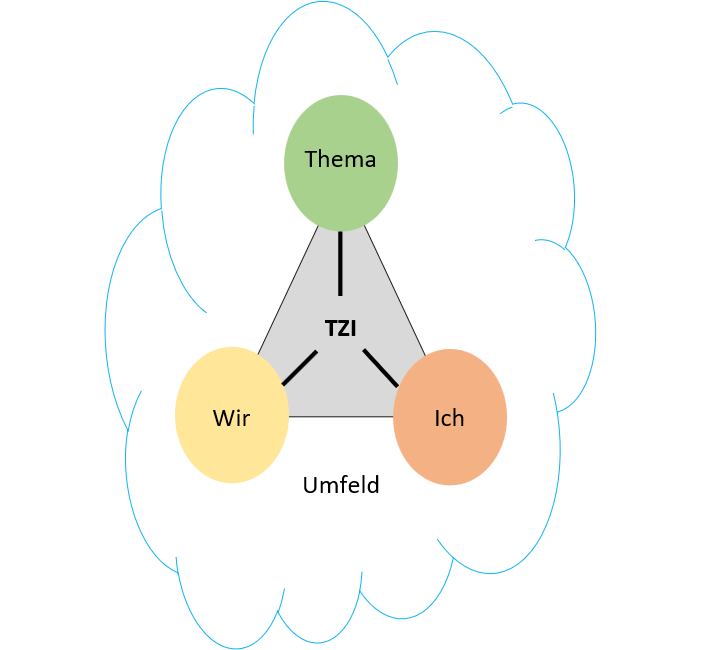Theme-Centered Interaction (TCI) – The Four-Factor Model
Theme-centered interaction is a model that shows how to guide a seminar group.
Theme-Centered Interaction (TCI) – The Four-Factor Model
Theme-Centered Interaction (TCI) – The Four-Factor Model
The focus is on "social learning" while allowing each participant to develop individually.
The model outlines two basic prerequisites that must be met for each participant to grow:
- A respectful atmosphere
- Prioritizing disturbances
Once these prerequisites are met, theme-centered interaction aims to balance four components. This helps both individual and group learning, ensuring all participants reach the set goal (theme).
Guiding Question
What does the learning process need to reach the event's goal or progress towards it? What does the learning process need to take the next step now?

Theme
The theme is the (learning) content, task, or goal the group focuses on.
When the seminar leader mainly focuses on the theme, the We-factor and I-factor might be overlooked. This can be useful in lectures or seminars when time is limited. It can also be helpful to prioritize the theme during introductions to content.
I
The I-factor highlights each participant's individual needs, desires, dreams, and personality patterns. Even in group work, each participant needs their own space occasionally.
The trainer claims the largest I-share at the seminar's start. During introductions, the I-factor is passed to each participant.
Generally, the group doesn't progress if one participant holds the I. Therefore, the I-share for participants should be limited.
We
The We-factor focuses on the group's dynamics, cohesion, and collaborative work. The goal is to foster openness and tolerance for mistakes, which are allowed and beneficial for development in the seminar context.
Environment
The environment includes external conditions, frameworks, and rules. The immediate environment includes seminar location conditions (e.g., available materials). The broader environment includes company policies, laws, morals, etc. In this model, the environment is accepted as given and unchangeable.
Examples

